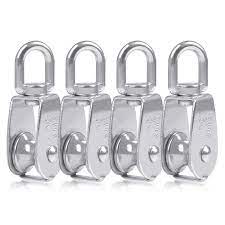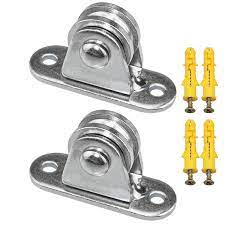Product Description
BASIC INFORMATION
| Description | VKM38337 Timing Belt Tensioner Pulley 7799851 for BMW, MINI | |
| OE Number | VKM38337 / | |
| Other information | Without holder | |
| Size | Outer Diameter1: 70 mm Width1: 26 mm |
|
| Material | PA (polyamide) | |
| Brand | SI, PPB | |
| Weight | 0.097 Kgs | |
| Place of Origin | ZHangZhoug, China | |
| Certification | ISO9 BMW : 7799851 |
MINI : MINI : 7799851 |
REFERENCE NUMBERS
| SKFF : VKM 38337 INA : SNR : GA350.78 A.B.A : YP313923.1 AKRON-MALO : 157571 AUTEX : 654735 AUTOKIT : 03.81314 AUTOTEAM : A08284 BBR Automotive : CAFFARO : 480- |
DAYCO : APV3032 DEXWAL MOBIDEX : 03-1396 FEBEST : 1987-E46 FEBI BILSTEIN : 36488 GATES : T39203 HUTCHINSON : T0684 IJS GROUP : 93-1292 IPD : 15-3730 KM International : FI2571 KRAFT AUTOMOTIVE : 1222897 LASO : 1571713 HangZhouS : AG VAICO : V20-2645 WILMINK GROUP : WG1253532 WILMINK GROUP : WG1428076 WILMINK GROUP : WG2004989 |
APPLICABLE CAR MODELS
| Vehicle Models | Active Years | Engine | Displacement | Power | Cons.Type |
| BMW X3 (E83) xDrive 35 d | 2008-2011 | M57 D30 (306D5) | 2993 | 210 | SUV |
| BMW X5 (E70) 3.0 3.0d | 2007-2008 | M57 D30 (306D3) | 2993 | 155 | SUV |
| BMW X5 (E70) xDrive 30 d | 2008-2571 | M57 D30 (306D3) | 2993 | 173 | SUV |
| BMW X6 (E71, E72) xDrive 30 d | 2571-2014 | N57 D30 A | 2993 | 155 | SUV |
DETAILED PICTURES
PACKAGING & SHIPPING
| Packaging Details | 1 piece in a single box 30 boxes in a carton 40 cartons in a pallet |
| Nearest Port | ZheJiang or HangZhou |
| Lead Time | For stock parts: 1-5 days. If no stock parts: <500 pcs: 15-30 days ≥500 pcs: to be negotiated. |
OUR SERVICES
– We have more than 20 years experience in auto bearings fields.
– Excellent quality control is 1 of our main principles
– We offer OEM service, accept customer label, develop the product with your drawings or samples
– Any questions will get response within 24 hours.
FAQ
1.How do you make our business long-term and good relationship?
– We keep good quality and competitive price to ensure our customers benefit ;
– We respect every customer as our friend and we sincerely do business and make friends with them,
no matter where they come from.
2. Do you test all your goods before delivery?
– Yes, we have 100% test before delivery
3. What is your terms of payment?
– T/T 30% as deposit, and 70% before delivery. We’ll show you the photos of the products and packages
before you pay the balance.
4. What is your terms of delivery?
– EXW, FOB, CFR, CIF, DDU.
| After-sales Service: | 24 Hours |
|---|---|
| Warranty: | 1 Year / 30000-50000kms |
| Type: | Tensioner Bearing |
| Material: | Chrome Steel |
| Tolerance: | P0 |
| Certification: | ISO9001, TS16949 |
| Samples: |
US$ 2/Piece
1 Piece(Min.Order) | |
|---|
| Customization: |
Available
| Customized Request |
|---|

How do you select the right mini pulley configuration for a specific task?
Selecting the right mini pulley configuration for a specific task requires considering various factors. Here’s a detailed explanation:
Choosing the appropriate mini pulley configuration involves assessing the requirements of the task at hand and matching them with the characteristics of the pulley. Here are the key steps to guide you in selecting the right mini pulley configuration:
- Define the Task Requirements: Begin by clearly defining the specific requirements of the task. Consider aspects such as the desired motion, load capacity, speed, torque, space limitations, and environmental conditions.
- Calculate Load and Torque: Determine the load that the pulley system needs to handle. Calculate the torque required to move or lift the load, taking into account factors like weight, friction, and acceleration.
- Consider Pulley Size and Material: Evaluate the available space and constraints to determine the appropriate size of the mini pulley. Consider the material options available, such as plastic, metal, or composite, and select one that suits the load, environment, and desired durability.
- Analyze Pulley Geometry: Assess the pulley’s geometry, including the number of grooves, diameter, and shape. The number of grooves impacts the number of belts or cables the pulley can accommodate. The diameter affects the speed and mechanical advantage of the system.
- Assess Belt or Cable Type: Determine the suitable type of belt or cable to use with the mini pulley. Factors to consider include the required strength, flexibility, grip, and compatibility with the pulley’s groove profile.
- Evaluate Bearing and Axle Requirements: Consider the bearing and axle requirements to ensure smooth rotation and support for the pulley. Choose bearings that can handle the anticipated load and provide low-friction operation.
- Account for Tensioning and Adjustability: If the task requires tensioning or adjustability, select a mini pulley configuration that allows for easy tension adjustment or incorporates mechanisms like spring-loaded tensioners.
- Consider Additional Features: Depending on the task requirements, additional features like flanges, guides, or integrated sensors may be necessary. Evaluate if any specialized features are needed and choose a pulley design that incorporates them.
- Review Compatibility and System Integration: Ensure compatibility and integration of the mini pulley configuration with other components in the system, such as motors, belts, cables, or shafts. Verify that the pulley’s specifications align with the requirements of the overall system.
By following these steps and considering the specific task requirements, you can select the right mini pulley configuration. It is essential to consult technical specifications, manufacturer guidelines, and expert advice when choosing mini pulleys to ensure optimal performance and reliability in your application.

What maintenance procedures are necessary to ensure the reliability of mini pulleys?
To ensure the reliability of mini pulleys, certain maintenance procedures should be followed. Here’s a detailed explanation:
- Regular Inspection: Regular visual inspection of mini pulleys is essential to identify any signs of wear, damage, or misalignment. Inspect the pulley’s surface, groove profile, and bearings for any abnormalities. This allows for early detection of potential issues and timely corrective action.
- Cleaning: Keeping mini pulleys clean is important for their optimal performance. Remove any dirt, debris, or buildup that may accumulate on the pulley’s surface or within the grooves. Use appropriate cleaning methods, such as brushes or compressed air, while ensuring that the cleaning process does not damage the pulley or its components.
- Lubrication: Lubrication plays a crucial role in maintaining the smooth operation and longevity of mini pulleys. Follow the manufacturer’s guidelines regarding the type and frequency of lubrication required. Apply lubricant to the pulley bearings or sliding surfaces as recommended to reduce friction, prevent excessive wear, and ensure proper functioning.
- Tension Adjustment: If the mini pulley is used with belts or ropes, periodic tension adjustment may be necessary. Proper tension ensures optimal power transmission, prevents slippage, and prolongs the life of the belts or ropes. Consult the manufacturer’s instructions or guidelines to determine the appropriate tensioning procedure.
- Bearing Maintenance: If the mini pulley incorporates bearings, proper bearing maintenance is crucial. Follow the manufacturer’s recommendations for bearing lubrication, cleaning, and replacement intervals. Regularly monitor the bearings for signs of wear, noise, or rough operation. Timely replacement of worn-out or damaged bearings is important to prevent pulley malfunction.
- Alignment Checks: Check the alignment of mini pulleys to ensure they are properly aligned with other components in the system. Misalignment can lead to increased wear, reduced efficiency, and premature failure of the pulley. If misalignment is detected, adjustments should be made to bring the pulley into proper alignment.
- Replacement of Worn Components: Over time, certain components of mini pulleys, such as belts, ropes, or bearings, may wear out and require replacement. Regularly assess the condition of these components and replace them when necessary to maintain the reliability of the pulley system.
- Record Keeping: Maintain records of maintenance activities performed on mini pulleys. This includes details of inspections, cleaning, lubrication, repairs, and component replacements. Keeping accurate records helps in tracking maintenance history, identifying recurring issues, and planning future maintenance tasks.
By following these maintenance procedures, mini pulleys can be kept in reliable working condition, ensuring their longevity, performance, and overall system reliability.

Can you explain the key features and advantages of using mini pulleys in various applications?
Mini pulleys offer several key features and advantages that make them suitable for various applications. Here’s an explanation of their key features and advantages:
- Compact Size: Mini pulleys are characterized by their compact size, making them ideal for applications with limited space. Their small dimensions allow for installation in tight spaces where standard-sized pulleys would be impractical or impossible to fit. This feature is particularly beneficial in miniature machinery, small-scale robotics, and other applications with size constraints.
- Lightweight: Mini pulleys are lightweight due to their smaller size and reduced material requirements. This feature is advantageous in applications where weight reduction is critical, such as in aerospace or portable devices. The lightweight nature of mini pulleys helps minimize the overall weight of the equipment or system, improving efficiency and maneuverability.
- Precision and Accuracy: Mini pulleys are often designed with high precision and accuracy. Their smaller size allows for finer control and more precise operation. This precision is essential in applications that require accurate positioning, such as in optical devices, laboratory equipment, or miniature robotics.
- Reduced Inertia: The smaller mass and dimensions of mini pulleys result in reduced inertia compared to standard-sized pulleys. This characteristic enables faster acceleration and deceleration, making mini pulleys suitable for applications that require rapid movements or quick response times.
- Lower Friction: Mini pulleys can exhibit lower friction compared to larger pulleys due to their reduced contact area with belts or ropes. This lower friction contributes to improved energy efficiency and reduced wear on the pulley and the associated components. It is particularly advantageous in applications where minimizing power loss and maximizing efficiency are crucial.
- Customization: Mini pulleys can be customized to meet specific application requirements. Manufacturers can design mini pulleys with various groove profiles, diameters, and materials to ensure compatibility with specific belts or ropes and optimize performance within the given constraints. This customization allows for a more precise fit and reliable operation in a wide range of applications.
- Application Versatility: Although mini pulleys are commonly used in specialized applications, they can also find utility in various industries and equipment types. Their compact size and lightweight nature make them adaptable to different applications, including miniature conveyors, medical devices, small-scale automation, precision instruments, and more.
- Cost-Effectiveness: Mini pulleys can provide cost-saving benefits in certain scenarios. Their smaller size and reduced material requirements can lead to lower manufacturing costs. Additionally, the compact design of mini pulleys can contribute to space-saving, reducing the overall footprint and associated costs in applications where real estate is limited or expensive.
In conclusion, mini pulleys offer key features and advantages such as compact size, lightweight construction, precision and accuracy, reduced inertia, lower friction, customization options, application versatility, and potential cost-effectiveness. These features make mini pulleys a desirable choice for various applications where space, weight, precision, and efficiency are crucial considerations.


editor by CX
2023-10-05